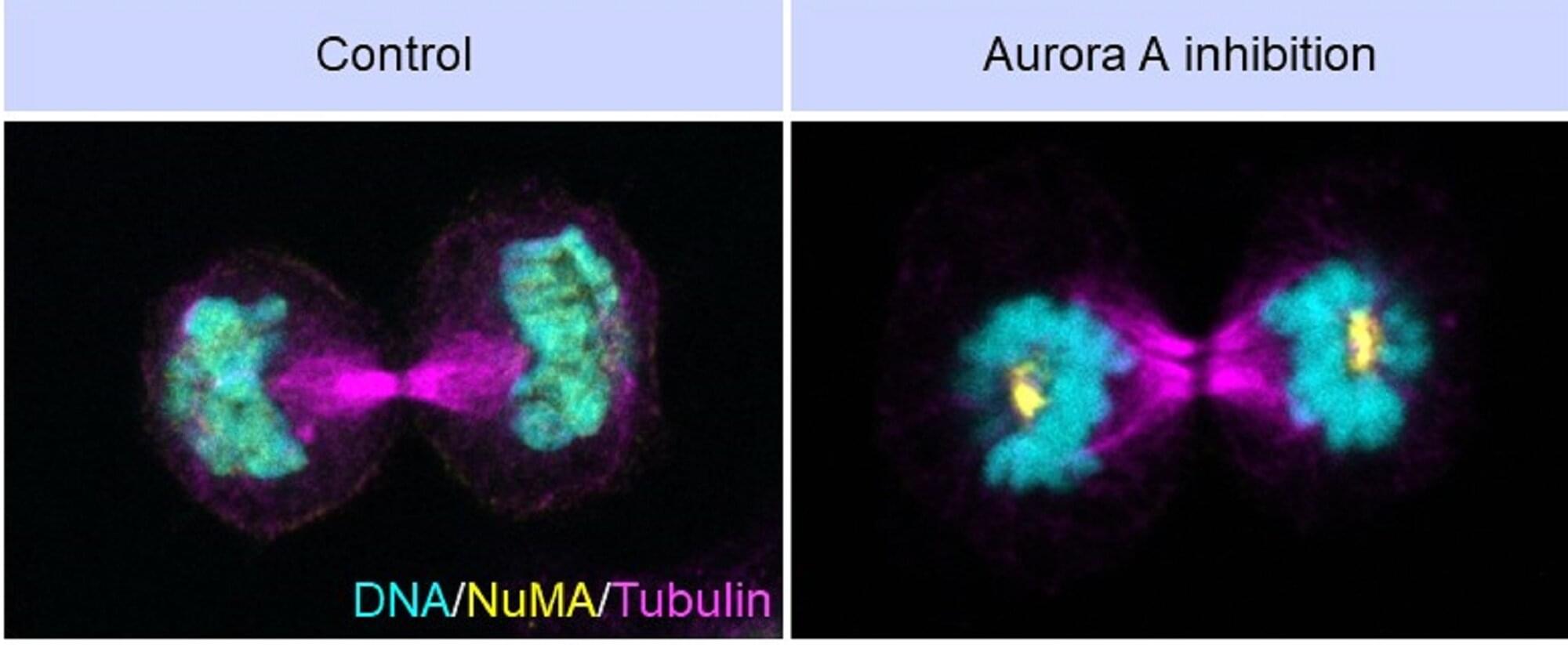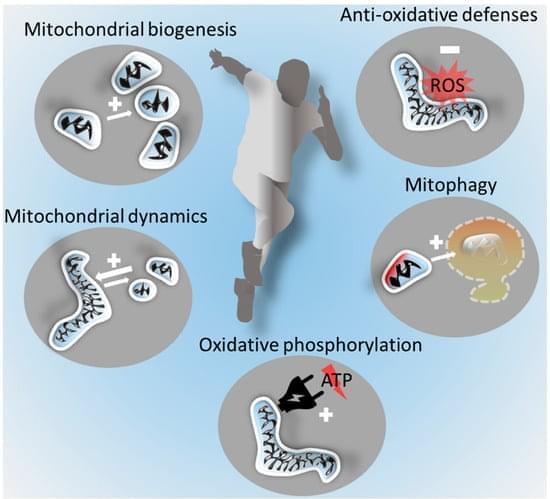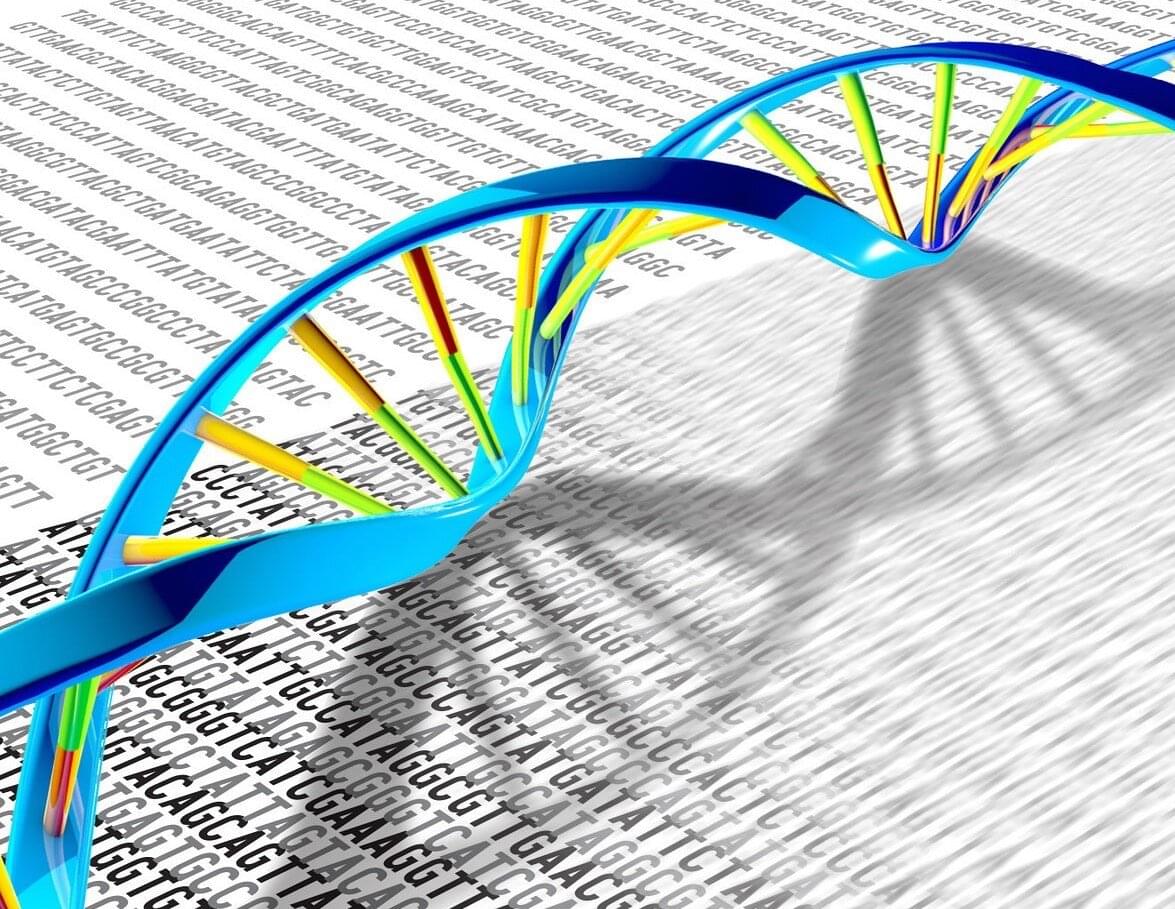A new clinical trial suggests stem cell therapy may restore vision in people with advanced dry age-related macular degeneration, a disease that currently has no cure.



Every time a eukaryotic cell divides, it faces a monumental challenge: It must carefully duplicate and divide its genetic material (chromosomes) equally, and then rebuild the nuclear envelope around the separated halves. If this process goes wrong, the resulting nuclei can be misshapen or disorganized—features often seen in cancer and aging-related diseases.
A new study from researchers at the Indian Institute of Science (IISc) and Université Paris-Saclay reveals how a key enzyme called Aurora A helps cells pull off this feat. The findings are published in The EMBO Journal.
In dividing cells, structures called spindle poles (or centrosomes) grow in size to generate the microtubule ‘tracks’ that pull chromosomes apart. Once this job is done, the spindle poles must shrink and disassemble so that the nuclear envelope can reform around the separated chromosomes.


Regular exercise is associated with pronounced health benefits. The molecular processes involved in physiological adaptations to exercise are best understood in skeletal muscle. Enhanced mitochondrial functions in muscle are central to exercise-induced adaptations. However, regular exercise also benefits the brain and is a major protective factor against neurodegenerative diseases, such as the most common age-related form of dementia, Alzheimer’s disease, or the most common neurodegenerative motor disorder, Parkinson’s disease. While there is evidence that exercise induces signalling from skeletal muscle to the brain, the mechanistic understanding of the crosstalk along the muscle–brain axis is incompletely understood. Mitochondria in both organs, however, seem to be central players.

University of Oxford-led research finds low-dose rapamycin functions as a genomic protector in aging human immune cells, lowering DNA damage.
The mechanistic target of rapamycin (mTOR) is a central signaling pathway that regulates and coordinates cell growth, metabolism, and survival in response to environmental cues. It helps cells integrate signals from growth factors, nutrients, and stress to control whether they are in an anabolic (building up) or catabolic (breaking down) state.
Aging immune systems accumulate DNA damage linked to immunosenescence. Rapamycin is a drug that inhibits the mTOR pathway. Originally developed for organ transplantation to prevent immune rejection, previous research has found that, at non-immunosuppressive doses, rapamycin can mitigate cellular senescence.
Space isn’t just for lonely colonies—it’s for communities. Join us as we imagine constellations of space habitats bound by tethers, trade, and trust, building not just homes in the stars but entire civilizations.
Watch my exclusive video The Economics of Immortality: https://nebula.tv/videos/isaacarthur–…
Get Nebula using my link for 40% off an annual subscription: https://go.nebula.tv/isaacarthur.
Get a Lifetime Membership to Nebula for only $300: https://go.nebula.tv/lifetime?ref=isa…
Use the link https://gift.nebula.tv/isaacarthur to give a year of Nebula to a friend for just $36.
Visit our Website: http://www.isaacarthur.net.
Join Nebula: https://go.nebula.tv/isaacarthur.
Support us on Patreon: / isaacarthur.
Support us on Subscribestar: https://www.subscribestar.com/isaac-a…
Facebook Group: / 1583992725237264
Reddit: / isaacarthur.
Twitter: / isaac_a_arthur on Twitter and RT our future content.
SFIA Discord Server: / discord.
Credits:
Space Habitat Clusters & Conglomerations.
Written, Produced & Narrated by: Isaac Arthur.
Graphics: Jarred Eagley, Jeremy Jozwik, Udo Schroeter.
Select imagery/video supplied by Getty Images.
Music Courtesy of Stellardrone and Epidemic Sound http://epidemicsound.com/creator.
Chapters.
0:00 Intro.
1:13 Why Clustered Habitats?
6:00 Habitat Types and Roles Within Clusters.
9:41 Mobility and Modularity – The Politics of Moveable Worlds.
14:02 Tethers, Transit, and Shared Infrastructure.
17:35 Shapes of Clusters and Dynamic Conglomerations.
23:43 Nebula.
25:21 Digital Ecosystems and Cultural Identity.
25:19 Economics and Trade in Habitat Constellations.
26:52 Education and Intergenerational Planning.
28:17 Security and Conflict Management.
29:10 A Tale of Unity.
32:29 Religion, Ritual, and Meaning.
33:19 The Long View: Legacy and Civilization.
34:07 Closing Reflections
Hi everybody. I’m writing to you because we are reaching an important moment in our reproduction of Harold Katcher’s seminal study of rats rejuvenation, in which we are only 9 months from starting the injections but we raised 71% of the total cost of the experiment. We already published the article of our 2024 experiment in a peer-reviewed journal (https://journals.tmkarpinski.com/index.php/ejbr/article/view/772), in which we injected the Pig Plasma Extracellular Particles (PPEPs) in young rats to assess a potential acute immunogenicity or toxicity — without any negative effect observed. Nina Torres Zanvettor (cofounder of ICR together with me) and I were interviewed some weeks ago by Eleanor Sheekey in her YouTube channel (https://youtu.be/Q-lS1UMHG1o?si=ImDWycjM8r8-KpyF), as we are trying to spread the word about the experiment and the crowdfunding. We are making the experiment in collaboration with Unicamp university and Dr. Marcelo Mori, a world-class aging scientist. The rats are already aging in the university facility and we are preparing the epigenetic age measurements with Horvath’s foundation (Clock Foundation), but we still have to raise 29% (US$21,000) of the total cost (US$75,000).
We will publish everything (methods, materials and results) immediately, but we need the help of the community too, as we will give back all the information for the community. Could you help us to fund the study? Any amount is important. The link to make a donation is https://www.rejuvenescimento.org/donation. I don’t even consider it precisely a “donation”, but a financial collaboration, as the “donor” would be able to use the information, and maybe they can also use the rejuvenation technology that some day would arise from this research. By the way, if we manage to rejuvenate the rats, we will then try to keep them young as long as we can, in a longevity experiment. Also, if we rejuvenate the rats, we will carry out a safety experiment in a Good Laboratory Practices facility here in Brazil that would allow regulatory approval to try the therapy in human patients who don’t have any other alternative to be kept alive — we expect to be able to carry out those human trials in 2028. So we intend to go all the way to the clinic, if we confirm Katcher’s results.
Slot DANA merupakan bentuk kerja sama situs slot online yang selalu menghadirkan keuntungan besar dalam setiap permainan slot gacor deposit QRIS dana pulsa 10K terbaru bonus scatter hitam.


A low-dose long-term administration of cannabis can not only reverse aging processes in the brain, but also has an anti-aging effect. Researchers from the University Hospital Bonn (UKB) and the University of Bonn together with a team from Hebrew University (Israel) have now been able to show this in mice. They found the key to this in the protein switch mTOR, whose signal strength has an influence on cognitive performance and metabolic processes in the entire organism. The results are now presented in the journal “ACS Pharmacology & Translation Science”
Some of these cookies are necessary and are used to help make our site work. With your consent, we will also use cookies to improve your experience, analyse site usage and assist in our marketing efforts. By clicking ‘Accept all’, you consent to our use of cookies.
